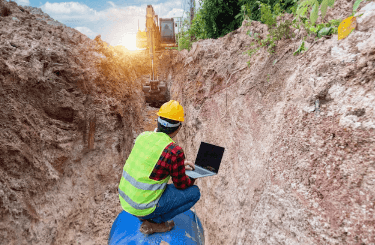Question
a.
number of openings
b.
number of openings per inch
c.
size of aperture in mm
d.
size of aperture in cm
Posted under Geotechnical Engineering
Interact with the Community - Share Your Thoughts
Uncertain About the Answer? Seek Clarification Here.
Understand the Explanation? Include it Here.
Q. In Indian Standard (IS : 460-11962) the sieve sizes are given by_____
Similar Questions
Explore Relevant Multiple Choice Questions (MCQs)
Q. The portion retained on______ IS sieve is termed as gravel fraction.
View solution
Q. The receiver at the bottom of the assembly in sieve shaking machine is________
View solution
Q. Sieving is performed by arranging the various sieves one over the other in the order of their mech openings.
View solution
Q. ______ minutes of shaking is done for soil with small particles.
View solution
Q. The percentage of soil retained on each sieve is calculated on the basis of ______
View solution
Q. The soil portion passing through 4.75 mm sieve is washed for further sieve analysis.
View solution
Q. ______ is used for washing the soil portion passing through 4.75 mm sieve.
View solution
Q. In sedimentation analysis, the soil fraction should be of what micron size, so as to be kept in a liquid medium (water).
View solution
Q. The sedimentation analysis is done with the help of________
View solution
Q. The time for a particle to settle, of diameter 0.06 through a height of 10 cm is_________
View solution
Q. Which of the following assumptions is wrong, with respect to sedimentation analysis?
View solution
Q. The sedimentation analysis is based on _________ law.
View solution
Q. In the formula, f=105√(300 ɳ/(g-1)Vw), the factor ɳ depends on__________
View solution
Q. The lower limit of particle size allowed in sedimentation analysis is ________
View solution
Q. 1 poise is equivalent to _________
View solution
Q. The unit weight of water in v=(2/g)r2(Vs-Vw/ɳ) is taken as ________
View solution
Q. Viscosity of water/liquid (ɳ) is expressed in ________
View solution
Q. Which of the following, cannot be used as a dispersing agent?
View solution
Q. The process of removal of organic matter and calcium compounds in the dispersion method is __________
View solution
Q. Which of the following are used as a standard sedimentation method in a laboratory?
View solution
Recommended Subjects
Are you eager to expand your knowledge beyond Geotechnical Engineering? We've handpicked a range of related categories that you might find intriguing.
Click on the categories below to discover a wealth of MCQs and enrich your understanding of various subjects. Happy exploring!








